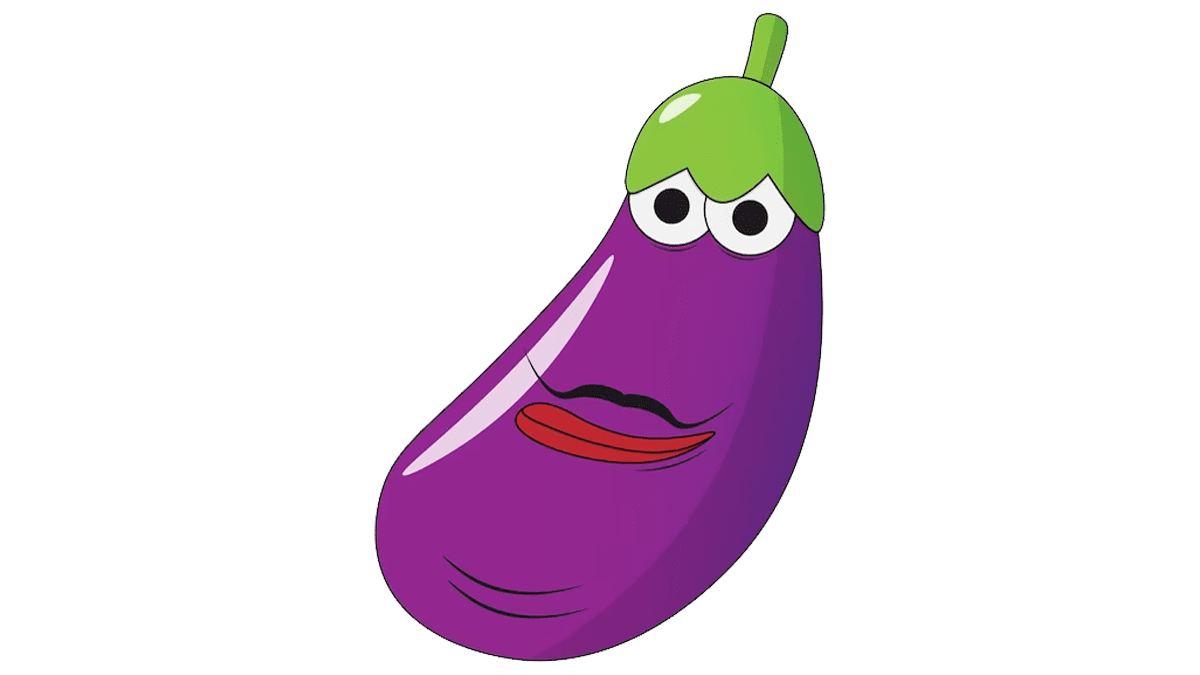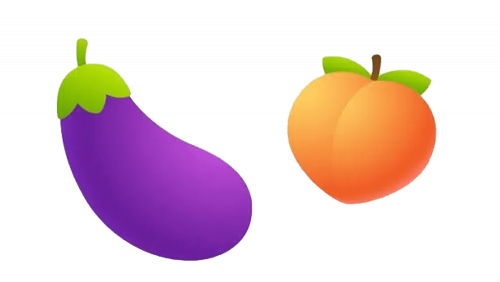Eggplant Emoji
🍆 The Eggplant Emoji: An Evolution of Digital Expression In today’s world of digital conversations, the Eggplant emoji stands as an iconic symbol, having traversed a fascinating trajectory from its literal portrayal as a purple or white vegetable to its current status as a multi-faceted emblem. In this article, we’ll embark on a journey to uncover the origins, metamorphosis, and diverse interpretations associated with the Eggplant emoji.
The Eggplant: A Fruit in Disguise
The eggplant, classified as a fruit within the Solanaceae nightshade family, exhibits a vast array of shapes, sizes, and hues across the globe. Despite its moniker, inspired by the plant’s egg-like contours, it generally matures into various shades of purple. The introduction of the Eggplant emoji to the emoji repertoire transpired in 2010, coinciding with the advent of Unicode 6.0.
A Shift Toward Sensuality
In the wake of its emoji debut, the Eggplant underwent a notable transformation, embracing a more alluring role. It swiftly assumed the mantle of a preferred symbol for a phallus in text messages and social media exchanges. This transition was primarily attributed to its suggestive resemblance, offering a visually captivating alternative to text-based representations, such as “8====D,” used to denote the male reproductive organ.
The Art of Emoji Pairing
🍑 Peach emoji: Often symbolizing a woman’s curves or female attributes, the amalgamation of the 🍆 Eggplant and 🍑 Peach emojis implies flirtatious innuendo.
💦 Droplets of Sweat emoji: When combined with the 🍆 Eggplant emoji, it subtly conveys a climactic moment.
😰 Anxious Face with Sweat emoji and 😳 Blushing Face emoji: These emotive symbols, when employed alongside the 🍆 Eggplant, can suggest specific emotional states in intimate dialogues.
👄 Mouth emoji, 👅 Tongue emoji, and 👀 Eyes emoji: Utilized for more explicit and vivid descriptions in conversations of a suggestive nature.
👊 Approaching Fist emoji and 🤜 Right-Facing Fist emoji: Occasionally used to symbolize intimate actions in a more explicit manner.
The Ban on Social Networks
The popularity of the Eggplant emoji as a sexual emblem led to its prohibition on various social media platforms, including Instagram and Facebook. In 2015, these platforms enforced stricter community guidelines to ensure a secure environment for all users, especially children. Consequently, the use of the Eggplant emoji in posts and comments was restricted. However, resourceful users quickly discovered alternative emojis, such as the Banana emoji or Peach emoji, to convey their intended messages while circumventing these bans.
The Eggplant and Peach Partnership
The pairing of the Eggplant emoji and the Peach emoji has emerged as a universally recognized symbol for expressing sensual content, often with distinct connotations pertaining to intimate encounters or body parts.
Embracing New Challenges and Opportunities
The journey of the Eggplant emoji serves as a testament to the ever-evolving nature of digital communication and the creativity of its users. It has evolved from a simple vegetable icon into a powerful representation of human emotions and desires. Even when confronted with bans, users demonstrated their adaptability by exploring alternative emojis and expanding their creative lexicon
In Conclusion
In conclusion, the Eggplant emoji, once a modest vegetable emblem, has transformed into an iconic symbol associated with the representation of male anatomy and sensual implications in digital communication. Its odyssey underscores the dynamic evolution of language and communication in the digital era, where emojis are potent tools for conveying a vast spectrum of emotions and intentions.












